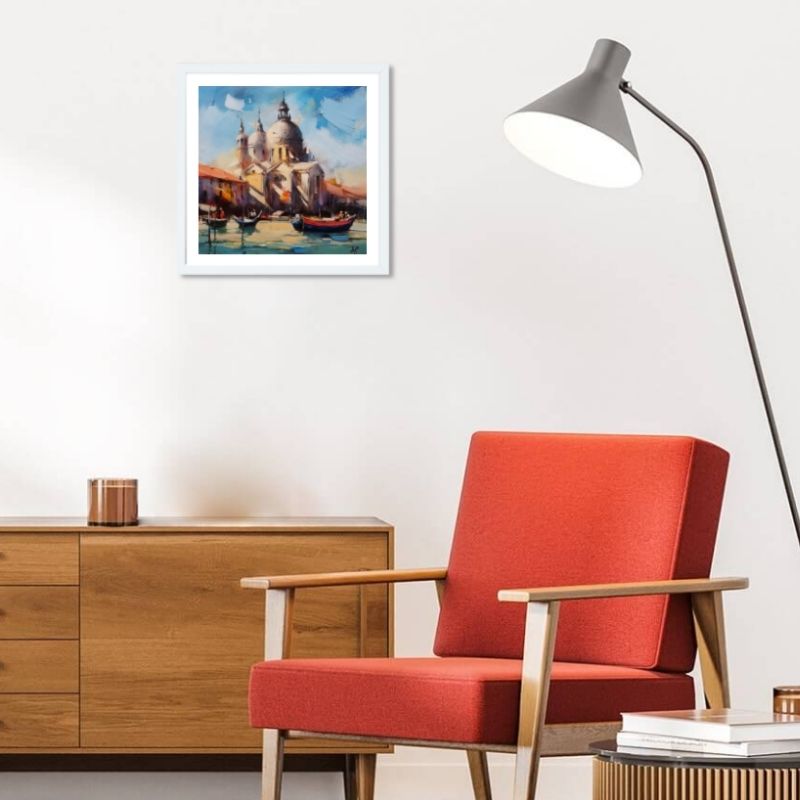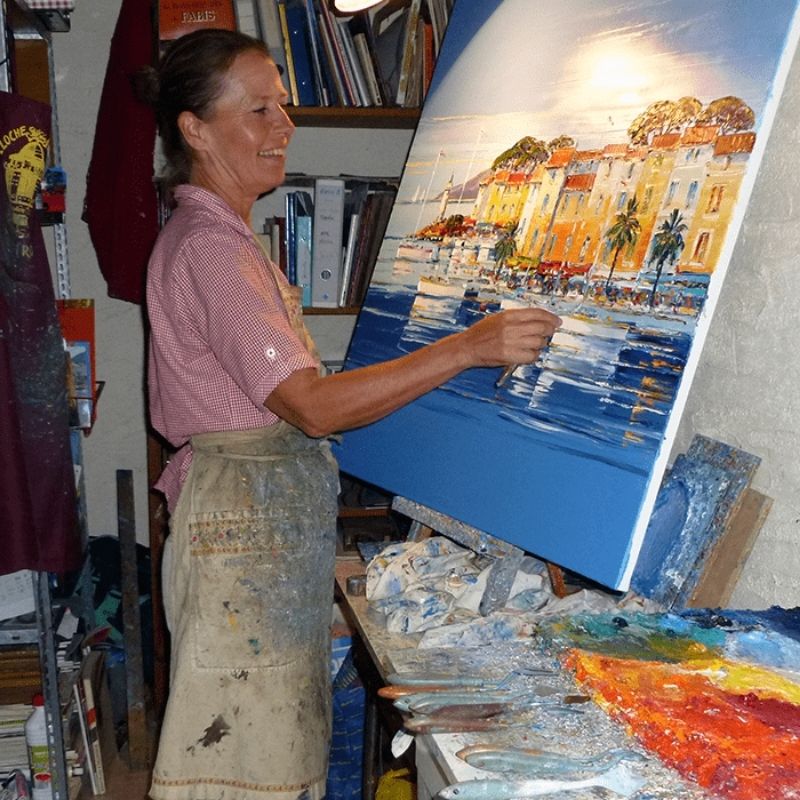8 techniques to learn oil painting

Are you doing your first oil painting?
In this case, don't hesitate to choose simple subjects, whose compositions and colors are not too busy or complex.
Still lifes are perfect subjects for beginners, as it is possible to choose objects or fruits, which are inanimate and have basic shapes.
It is possible to get your hands on photographs, which are already images of a 2-dimensional subject, which is a real advantage when you are a beginner in painting, or even in drawing.
If you don't know much about drawing, you can transfer a photograph onto your canvas to save time.
Prepare a drawing on the canvas
This step is not mandatory, but it is definitely recommended for beginners in oil painting.Rather than making a complicated drawing, sketch a sort of frame that will serve as a reference point when you put your first colors on the canvas.
This preliminary drawing allows you to check your composition, before painting, and to be sure of the shapes, proportions, assemblies and guidelines of your future painting.
Think also about what the background of the painting will be and what the central element (or elements) of the composition will be; the one that attracts the viewer's eye.
You can do this drawing with charcoal, red chalk, pencil (without pressing too hard) or with very diluted oil or acrylic.
Don't hesitate to read our article on the best techniques to master acrylic painting.
Oil painting : first color background

In order for your colors to adhere perfectly to the canvas and for your painting to be successful, it is advisable to make a first color base, otherwise known as a "juice".
This juice consists of the application of a little color very diluted with turpentine, which almost looks like watercolor.
Painters often use an ochre color for this first background. But it is possible to apply the first tones of oil paint (always very diluted) which are close to the final colors.
For example, where you want to use red, use a very diluted magenta, etc. This is an excellent technique to quickly visualize the effect of the composition and colors on your canvas. Ideally, you should still be able to see the preliminary drawing below.
Determining light sources
Think about the colors of the oil painting
Before you even begin, it is important to think about and determine the colors of your oil painting.
This may seem trivial to those who already know the basics of painting, but beginners often don't pay attention to how the colors match and how they are assembled on the canvas.
In order for the composition to be successful, and for you to enjoy it, it is important to know which colors will be ideal for the chosen subject.
By preparing this work mentally before you start, your oil painting will be more successful.
Learn to mix your colors
The main advantage of the long drying time of oil paint is that you can touch up, re-mix your colors and change what you want.
However, it is very difficult to get the same color mix twice in a row.
We therefore advise you to prepare your colors in large quantities, to avoid having to mix colors again and not finding your original shade.
To overcome this problem, you can use pure colors or ready-made shades in tubes.
To achieve color variation, simply add more or less white to a shade.
And to darken a color, add a little black.
Start putting the oil paint on the canvas
The dreaded moment has arrived! It's time to put the paint on the canvas and to actually create your oil painting.
This step is achieved through a succession of layers or sections. Of course, it is with experience that the oil painting technique is acquired.

But there are :
3 golden rules to know for an oil painting:
It is possible to make a background with acrylic and paint on it with oil, but the reverse is forbidden (it is incompatible).
You must always paint "fat on lean", that is to say, always increasing the dose of oil (you start with a layer poor in oil, then a second layer richer in oil, then a third even richer, etc.).
Finally, always wait for the last coat to dry before painting the next one (the drying time depends on the oil content of the paint coat, the richer it is, the longer it will take to dry).
Finalize the painting and make touch-ups.
The advantage of oil paint is that it can be easily retouched until it is dry. This means you can do your small touch-ups after the bulk of the work is done. Use a damp cloth to touch up your mistakes. You can use pure paint for your final touches.
Don't forget to step back and look at your painting from a distance, with fresh eyes. Don't hesitate to take your time, this is an essential step that should not be neglected! When your painting is finished, let it dry patiently.
It is possible to varnish it once it is completely dry.
What material to use for oil painting ?
We advise you to use quality materials to make an oil painting. Kits for beginners (paints and/or brushes) are often of poor quality and do not allow you to work well. Do not neglect the quantity of white paint, you will often need it.
Always have primary and secondary colors in stock, so that you can achieve all possible shades.
Finally, buy quality brushes, knives, soft and hard brushes, so that you can vary the effects and find what suits you best.
And don't forget linseed oil and turpentine, two essential products!














